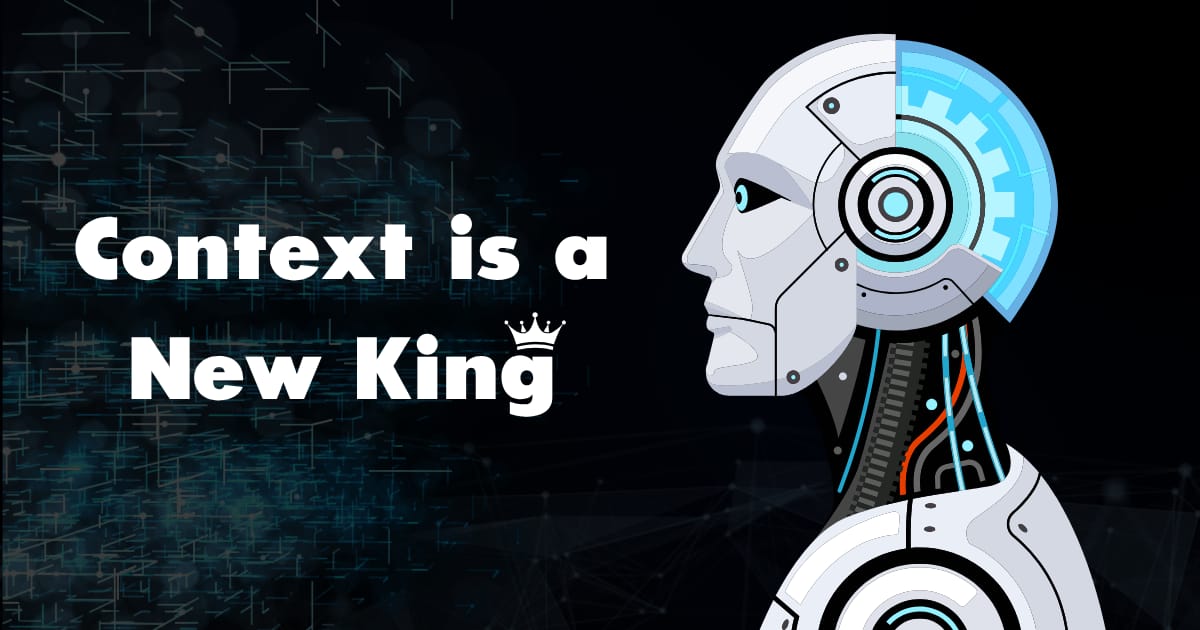👋 Hey there, Welcome back: A new AI skill is quietly becoming more important than prompting, and it’s changing how we work with AI every day.
It’s called Context Engineering, and it’s about giving AI the right setup, not just a clever one-liner.
While prompting helped us get started, context engineering is what makes AI truly useful in real-world apps.
In today’s edition of NeuralDrop, I will walk you through what context engineering is, why it matters, and how to start using it.
🔦 In Today’s AI drop
- Context Engineering is a new AI Skill
- Remote AI job opportunities
- Latest 3 AI news you should know
- Top 3 trending AI tools
🧰 Remote AI Job Opportunities
💻 Pepper Cloud - AI ML Engineer
🧑💻 Crossover - AI Augmented Full-Stack Principal Engineer
🎬 Atlabs AI - AI Video Editor
🤯 This Week in AI
📡 Grok AI to Launch in Tesla Cars Next Week: Elon Musk announced that Grok AI, xAI’s conversational model, will be available in Tesla vehicles “at the latest” next week, bringing generative AI directly into EVs via in-car systems. Read More
🧬 CZI’s New AI Model Pinpoints Cancer at the Cellular Level: The Chan Zuckerberg Initiative urevealed GREmLN, a powerful biomodel designed to detect early cellular signs of cancer, advancing disease diagnosis and treatment research. Read More
🤖 xAI Rolls Out Grok 4 with $300/mo Subscription: Musk’s AI venture xAI launched Grok 4, its most advanced model yet, and introduced a premium subscription tier at $300/month, targeting professionals needing enhanced AI feature. Read More
🧠 Context Engineering is a New AI Skill

Prompt engineering helped us get started with AI. But as AI becomes more advanced and integrated into real products, context engineering is a deeper skill you want to learn.
It’s not about crafting clever one-liners for ChatGPT. It’s about designing the full setup that helps AI do its job well.
Let’s understand what it means, why it matters, and how you can start applying it today.
🔍 What is Context Engineering?
Context engineering is the process of feeding AI models like ChatGPT or Claude with the right background, input, instructions, tools, and memory so they can respond effectively.
Tobias Lütke (Shopify CEO) described it well:
“It’s the art of providing all the context for the task to be plausibly solvable by the LLM.”
So, if you want good answers, you have to give the model with the right context before it starts responding.
And with the rise of AI agents, this matters more than ever.
🤖 Agent Failures are usually Context Failures

Many people think AI agents fail because the models are weak or the code is buggy. But in reality, most failures happen because the model wasn’t feed enough or the proper context.
An AI agent can only work with what it’s given. If the input is limited or unclear, the result won’t be good, even if the model is very advanced.
So if your chatbot or AI tool isn’t working well, the problem is probably not the model. It’s the information you gave.
📦 What Exactly Is “Context” in AI?
To get great results from AI, you don’t just need to ask something, you need to guide it properly. You can do this by structuring your prompt using three simple parts.
Instructions / System Prompt: A guide that tells the AI how to behave, including rules, tone, or examples. This will give the model a personality or role.
User Prompt: The actual question or task you ask the AI to do right now.
State or Short-Term Memory: This is the conversation so far, what you have asked and what the AI has answered. It helps the AI stay on topic.
Long-Term Memory: This is information that the AI remembers across different chats, such as your name, interests, or previous projects.
Retrieved Information (RAG): This is live, external information that the AI collects, such as from documents, search results, or a database, to stay current.
Available Tools: These are extra functions that AI can use to do things, like pressing buttons to take action.
Structured Output Formats: These are rules about how the AI should format its reply, like using bullet points, tables, or code blocks.
Together, all these parts make up the AI's working memory, and they decide how good the final answer will be. If any part is missing or unclear, the output might not be useful.
Prompting is about writing clever instructions.
Context Engineering is about building a full system.
🔧 How to Start Context Engineering?

If you want better answers from AI, whether you're writing code, chatting, or creating content, you need to guide it properly.
Here’s a simple 3-step method to improve your prompts. You can use it anywhere, ChatGPT, coding assistants, content tools, or even chatbots.
Step 1: Instruction
(Tell the AI what you want it to do. Be direct and specific)
👉 Example:
Write a LinkedIn post to promote our Neural Drop newsletter. Make it informative and engaging.
Step 2: Input / Data
(Give the AI the core information it should use. Don’t make it guess).
👉 Example:
Our newsletter helps tech professionals stay ahead in the fast-moving AI space. We share handpicked AI tools, practical use cases, and simplified breakdowns of the latest trends. Readers say they discover 3x more useful tools and insights compared to traditional news sources.
Step 3: Output Format
(Tell the AI how the final output should look. That controls clarity)
👉 Example:
Structure it with a hook, short paragraphs, emojis, and a strong call-to-action at the end.
Start thinking in systems. Structure the input. Design the context.
Because in the world of AI, context is everything.
🚀 Today’s Trending AI Tools
📦 Black Box AI – AI code converter and code explainer for developers.
🖼️ Photoroom – AI tool to instantly remove backgrounds and improve product photos.
🎨 Crayo – AI-powered tool for generating creative content ideas and marketing copy.
Got a favorite AI tools, or anything useful?
Hit reply and share it with us, we might feature it in the next newsletter!
___________________________________________________________________
